10 Mistakes You’re Making That Keep Your House Cold, Experts Say
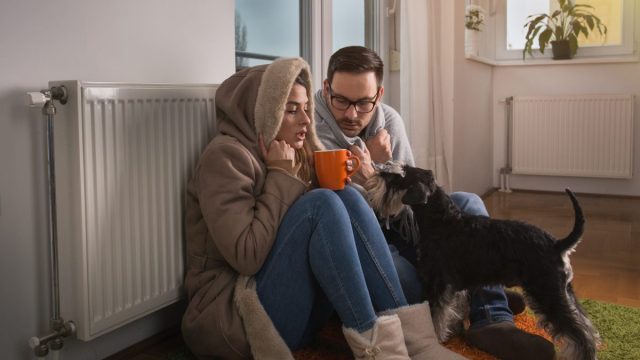
Inside a warm, cozy house is the perfect place to be when the temperature drops. But keeping the heat on is becoming an expensive proposition with fluctuating fuel prices and availability. By recent Department of Energy numbers, utility bills are about $2,000 a year for the typical U.S. household, and heating an average home accounts for about $900 of that, according to Consumer Reports.
But whether your home is old or new, there are things we often overlook that let the cold air inside and make the furnace or heater work harder to keep things toasty. Luckily, home improvement pros know exactly where to look—and what not to overlook. Read on for advice straight from the experts on what you might be doing wrong when it comes to keeping the chill at bay.
READ THIS NEXT: The 5 Worst Things You’re Doing to Your Toilet, According to Plumbers.
1
Not optimizing your thermostat.
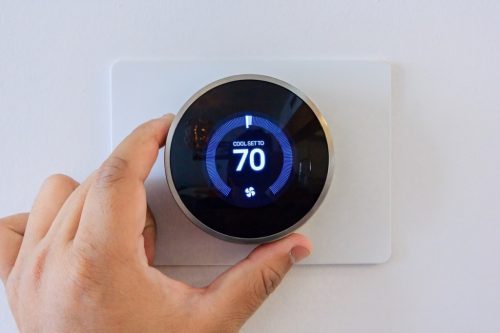
Placing your thermostat in an area that gets direct sun is a big no-no. “This is sometimes an issue in larger homes with only one central thermostat,” says Ryan Meagher of residential construction company BVM Contracting. “Many times if you have your thermostat on the main level of a home, the temperature it is reading is not the average temperature of all of the rooms in all levels of the house.”
To help balance your thermostat during the winter months, lower the temperature while you’re out, suggest Brian and Mika Kleinschmidt, stars of HGTV’s 100 Day Dream Home and partners with American Standard Heating and Air Conditioning. “A good guideline for winter is to set it to about 68 degrees Fahrenheit (20 degrees Celsius) when you’re home and lower it (about 10-12 degrees Fahrenheit or 6-8 degrees Celsius) at night or when you’re away. You can save as much as 10 percent a year in heating and cooling costs by turning back thermostats 7-10 degrees Fahrenheit for eight hours a day.”
Another error is not using a programmable thermostat. Shaun Martin, owner and CEO of Denver-based The Home Buying Company, says these regulate your home’s temperature so you’re only heating or cooling it when necessary. “This can save you money on your energy bills and help to keep your home at a comfortable temperature.”
2
Not flipping your ceiling fan in winter.
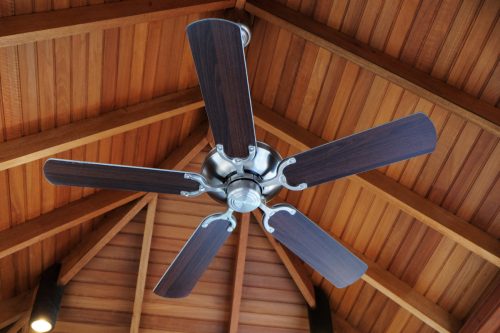
You know about turning your clocks back, but did you know you should also run your ceiling fan in the opposite direction in winter?
“Be sure to adjust the setting on any of your ceiling fans to run clockwise for the winter,” advises Bill Samuel, a licensed contractor with Chicago-area residential real estate developer Blue Ladder Development. “If you look at the base of your fan you should be able to find a small switch that will change the direction the blades move if you don’t have a remote. A ceiling fan running clockwise will help create an updraft and help circulate warm air throughout your home.”
READ THIS NEXT: 5 House Plants That Don’t Need Sunlight.
3
Not checking for drafts and sealing around windows and doors.
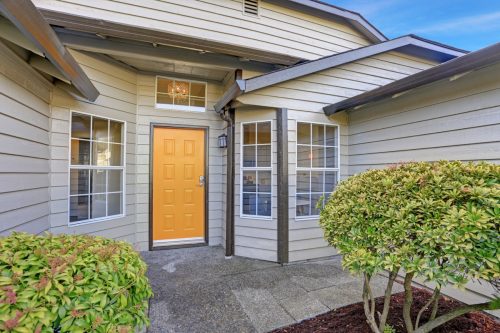
One of the most common mistakes people make that can bring cold air inside is not checking for drafts, according to Meagher. “Check around all doors and windows for any cracks or gaps where heat might be escaping. You can often feel a draft if you put your hand near the opening. Seal the drafty areas with weatherstripping or caulk. This will help to keep the heat in and the cold out.”
4
Not insulating your attic.
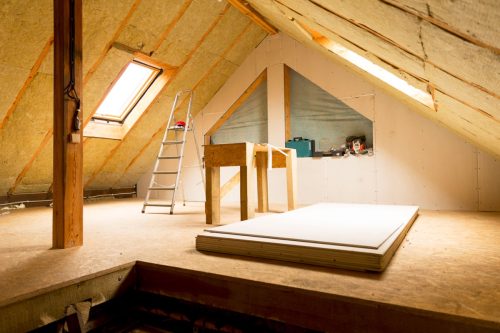
If your attic isn’t properly insulated, heat can escape through the roof and cause your home to feel colder than it should.
“Make sure your attic is adequately insulated by checking the level of insulation and adding more if necessary,” says Martin. “This will help to keep your home warmer in the winter and cooler in the summer.”
For more home advice delivered straight to your inbox, sign up for our daily newsletter.
5
Skipping regular maintenance on the furnace and heater.
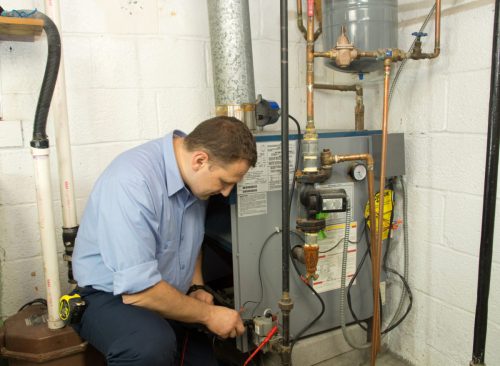
As early as fall, hire a professional to inspect your HVAC system, especially your heating units. Don’t put off dealing with heater issues until colder months, when schedules are tight and service fees can climb.
“Even the most energy-efficient electric heaters can malfunction and cause your home to become colder during winter,” notes Robert Johnson, marketing director at Coast Appliances. “It’s important to ensure your heaters are in good working condition with clean filters and lubricated components to avoid thermoregulation issues and undue breakdown.”
6
Not changing air filters and furnace filters.

Alex Capozzolo, co-founder of San Diego-based SD House Guys, says one of the most common mistakes people make is not changing their return air filter. “A dirty air filter will restrict airflow and make your heating system work harder, which can lead to higher energy bills and a colder home. Be sure to check your air filter monthly and change it as needed.”
The Kleinschmidts also stress the importance of checking air filters. “According to the Department of Energy, clogged filters are an added cost, and ensuring your home has a clean one can save up to $30 a month. Air filters should be changed every 90 days unless otherwise indicated on the packaging or by the manufacturer.”
READ THIS NEXT: The First Things Guests Notice When They Come Into Your Home, Experts Say.
7
Overlooking air ducts and ignoring attic bypasses.
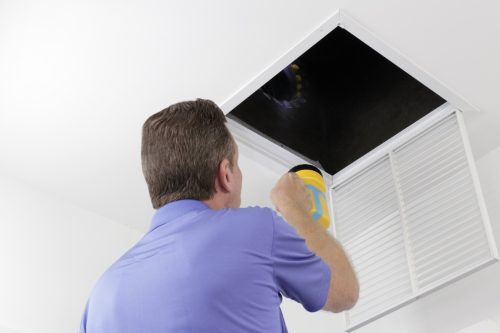
Duct leakage is probably not the first thing on people’s minds when cold weather sets in, but it’s important when it comes to indoor air quality, energy bills, and temperature regulation, according to Jason Powell, founder of Las Vegas-based Breathe Clean Air Duct Cleaning.
“Most homeowners are losing 20 percent or more of the conditioned air that their AC/heating units push out,” says Powell. “This is due to duct leakage and is a result of actual small holes and gaps in all residential ductwork. There’s a new technology that helps get these gaps sealed for good.”
Attic bypasses are another major way a home can lose heat, and they can lead to scary things known as ice dams. “These bypasses are unseen passageways where interior heat escapes into the attic,” explains Joe Palumbo, president of the Minneapolis-based Ice Dam Guys. “If your home is set up properly, your interior heat should remain within the sheetrock in the livable space and not escape into the attic. When it does, that heats the attic unnaturally and it becomes too warm compared to the exterior freezing temperatures. This warms enough of the snow on your roof to melt but not enough to escape the entirety of your roof. So this snowmelt pools at the gutters and eventually re-freezes. This is an ice dam, and they’re incredibly destructive and can be costly to remove.”
You can reduce or eliminate these bypasses by having a home energy audit performed by a local provider. They’ll find any bypasses, which are often at or around chimneys, dropped ceilings, the tops of interior walls, canned lighting features, or where electrical wiring comes into the home from the attic.
“The good news is there’s usually a solution that involves tightening a fixture, adding insulation or sealed tape, and more,” says Palumbo. “It’s just about closing those passageways so your home’s HVAC system runs efficiently and effectively without the previous waste.”
8
Closing vents and doors.
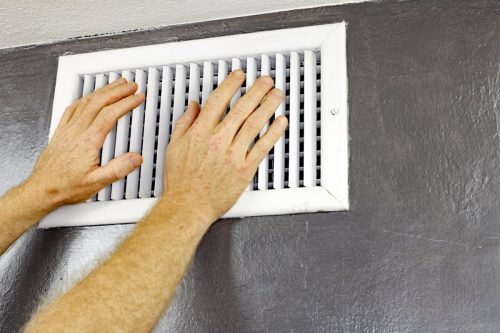
Another common mistake is keeping vents and doors closed in an attempt to save energy. While this may seem to make sense, you should actually do the opposite. By closing them off, you’re restricting airflow and making your heating system work harder, which can lead to a colder home and higher energy bills.
“Closed doors reduce the air supply,” explains Meagher. “Since there are only so many air returns in a home (and usually located in a hallway or common space) if there is restricted supply air, your entire home’s air flow might be affected by your closed doors. Your two options to prevent this are to simply keep the closed doors open or to create a passthrough vent through the walls of closed-door rooms to allow air to keep circulating through, creating good airflow throughout the rooms you have closed off.”
Martin points out a related mistake: “If your vents are blocked by furniture or other objects, it can make it difficult for heat to circulate properly. Make sure to keep your vents clear so that the air can flow freely and help to keep your home warm.”
READ THIS NEXT: 5 Surprising Household Uses for Aspirin, According to Experts.
9
Not checking chimneys and fireplaces.
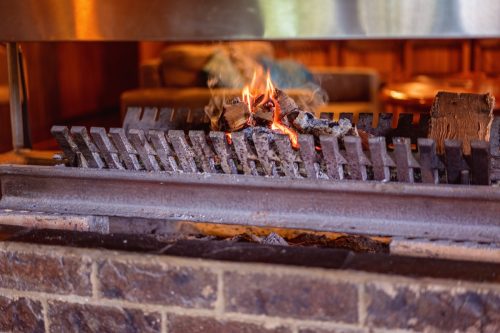
Kriss Swint, director of marketing communications at Westlake Royal Building Products, explains that people tend to ignore wood-burning stoves and fireplaces in the warmer months, but it’s a good idea to inspect and service them before cold weather sets in.
“Chimneys can be a source of cold air leaks and other issues in the winter,” says Swint. “Clear any obstructions, check the damper for functionality, check the chimney draft, inspect the firebrick in the fireplace, and have the chimney properly cleaned. This will all ensure that the fireplaces and wood stoves are in good condition for the colder months while guaranteeing that they aren’t letting in more of the elements than they need to.”
10
Not using your curtains and blinds.
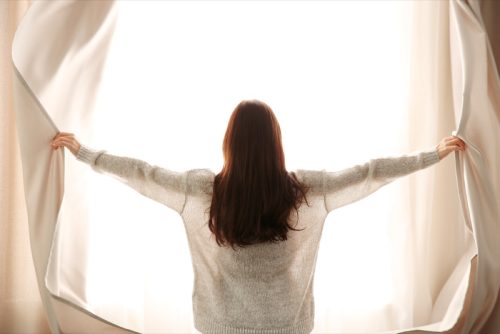
Keeping your curtains shut all day is yet another mistake that contributes to a colder house. While insulated curtains can help keep your home warmer, if you have them closed when the sun shines directly on them, you’ll miss out on the sun’s radiant heat.
“The starting point of all healthy homes is daylighting,” says David Clark, contractor and CEO at Basement Guides. “It is essential to choose a home that allows daylight indoors, especially if you live with children or those with compromised immune systems. Natural light in a home keeps the indoors warm. An indoor heating system is great, but a home needs to have plenty of sunlight.”